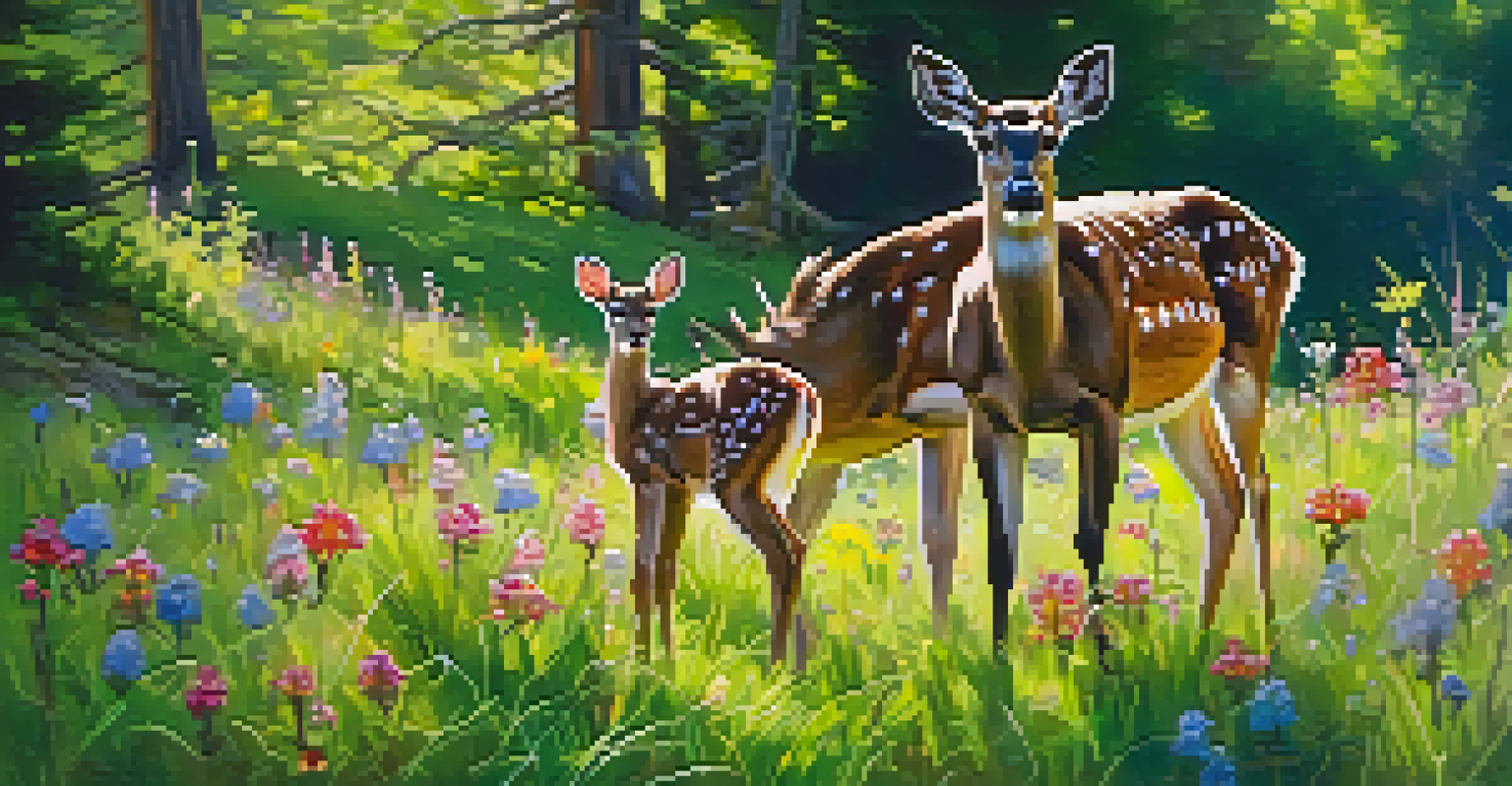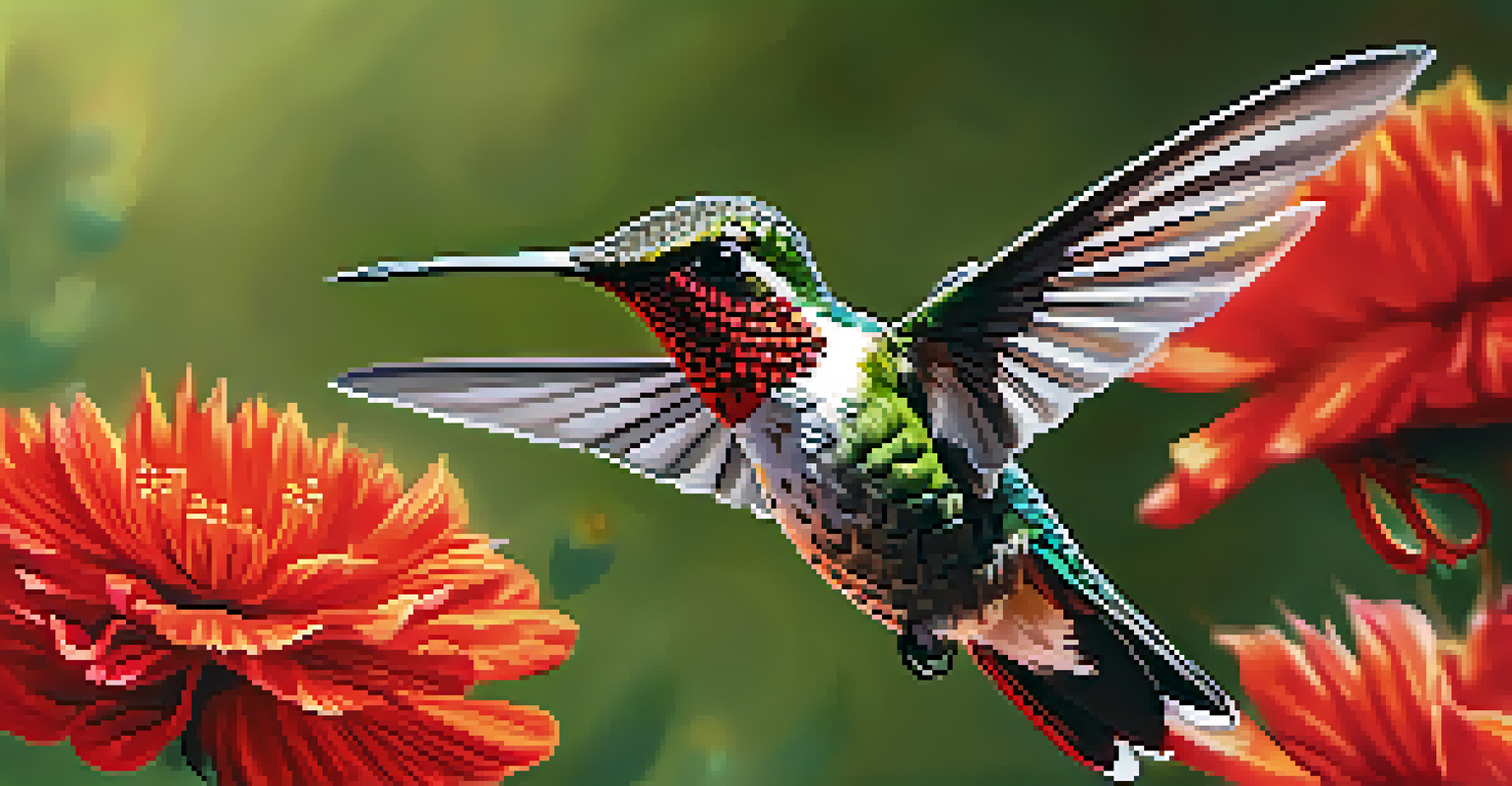Summer Wildlife Photography Tours: Capture Animals in Action

Why Summer is Ideal for Wildlife Photography Tours
Summer is often considered the prime season for wildlife photography. With longer days and warmer temperatures, animals are more active and visible, making it easier to capture stunning images. Additionally, many species have their young during this season, providing unique opportunities to photograph family dynamics in the wild.
In every walk with nature one receives far more than he seeks.
During summer, the lush landscapes also serve as a beautiful backdrop for your photos. The vibrant greenery and blooming flowers not only enhance your images but also attract various wildlife. This seasonal abundance means you're likely to encounter a wider variety of species, from birds to mammals, all in their natural habitats.
Moreover, summer wildlife tours are designed to take advantage of this season's unique characteristics. Expert guides often lead these tours, helping you find the best locations and times to catch animals in action, whether it's the early morning light or the golden hour before sunset.
Choosing the Right Location for Your Photography Tour
When it comes to wildlife photography, location is everything. Popular destinations like Yellowstone National Park or the Serengeti offer breathtaking scenery and a rich diversity of wildlife. Researching specific locations can help you determine where to go based on the animals you want to photograph.

Different regions have unique wildlife populations, so consider what kind of animals you’re hoping to capture. For instance, if you're interested in seeing polar bears, summer is a great time to visit locations like Churchill, Canada. Alternatively, if you want to photograph migratory birds, coastal wetlands may provide the best opportunities.
Summer Boosts Wildlife Activity
With longer days and warmer weather, summer is the prime season for capturing active wildlife and their young.
It's also important to consider the accessibility of these locations. Some wildlife photography tours are designed for beginners and offer easy access to animal-rich areas, while others may require more strenuous hiking or travel. Choose a location that matches your comfort level and photography goals.
Essential Gear for Wildlife Photography Tours
Having the right gear is crucial for capturing stunning wildlife photographs. A good camera with a fast autofocus system and a telephoto lens will allow you to get close-up shots without disturbing the animals. A lens with a focal length of at least 300mm is often recommended for wildlife photography.
Photography is the story I fail to put into words.
Tripods or monopods can also be essential, especially for longer lenses, as they help stabilize your shots. Additionally, consider packing extra batteries and memory cards, as you don't want to miss out on a perfect moment due to equipment failure. A comfortable backpack can help you carry your gear comfortably throughout the day.
Lastly, don't forget about protective gear. Weather can be unpredictable, so a rain cover for your camera and a weatherproof bag can safeguard your equipment. Being prepared for various conditions will ensure you're ready to capture wildlife in any scenario.
Timing: Best Times for Wildlife Photography
Timing is key when it comes to wildlife photography. Many animals are most active during dawn and dusk, so planning your outings around these times can yield the best results. The soft lighting during these hours not only enhances your photos but also increases your chances of encountering wildlife.
Additionally, seasonal changes can affect animal behavior. For example, during the summer months, many species are more visible due to mating seasons and the presence of young. Understanding these patterns can help you optimize your photography tour experience.
Location Matters in Photography
Choosing the right location is crucial for wildlife photography, as different regions offer unique animals and accessibility.
Keeping a flexible schedule is also beneficial. Wildlife can be unpredictable, and sometimes it takes patience and persistence to capture the perfect shot. By remaining adaptable and observing animal movements, you can increase your chances of those breathtaking moments.
Ethics of Wildlife Photography: Respecting Nature
As a wildlife photographer, it's important to prioritize ethics in your practice. Always respect the animals and their habitats by maintaining a safe distance and not interfering with their natural behaviors. Disturbing wildlife can lead to stress for the animals and disrupt their day-to-day lives.
Familiarizing yourself with local guidelines and regulations is vital. Many national parks and wildlife reserves have specific rules regarding how close you can get to animals and when to avoid certain areas. Adhering to these rules not only protects the wildlife but also helps preserve these beautiful locations for future photographers.
Lastly, consider the impact of your photography on the environment. Opt for sustainable practices, such as avoiding litter and using eco-friendly products. By being a responsible photographer, you can enjoy capturing stunning images while also contributing positively to the conservation of wildlife.
Tips for Capturing Action Shots of Wildlife
Capturing action shots of wildlife can be exhilarating but challenging. To increase your chances, practice pre-focusing on an area where you anticipate action, such as a watering hole or a nest. This technique allows you to react more quickly when the moment arrives, ensuring you don’t miss that perfect shot.
Fast shutter speeds are essential for freezing motion, so adjust your camera settings accordingly. If you’re photographing birds in flight or animals running, a shutter speed of 1/1000 of a second or faster is often necessary. Experimenting with different settings can help you fine-tune your approach.
Ethics Are Key in Wildlife Photography
Respecting wildlife and their habitats while adhering to local guidelines is essential for responsible photography.
Lastly, patience is key. Wildlife is unpredictable, and you may have to wait for long periods to capture the action you're hoping for. Bring along a good book or enjoy the scenery while you wait; sometimes, the most rewarding moments come when you least expect them.
Post-Processing Tips for Stunning Wildlife Photos
Once you've captured your wildlife photos, the next step is post-processing to enhance their beauty. Using software like Adobe Lightroom or Photoshop, you can adjust lighting, contrast, and colors to make your images pop. A little tweaking can transform a good shot into a stunning one.
Consider cropping your photos for better composition or to eliminate distractions in the background. This can help emphasize the subject of your photograph and draw the viewer's eye. Just be mindful not to crop too much, as it may reduce image quality.

Finally, don't forget to back up your photos! After all the effort you put into capturing those moments, it’s crucial to have a secure backup. Use external hard drives or cloud storage solutions to ensure your treasured wildlife images are safe and accessible for years to come.